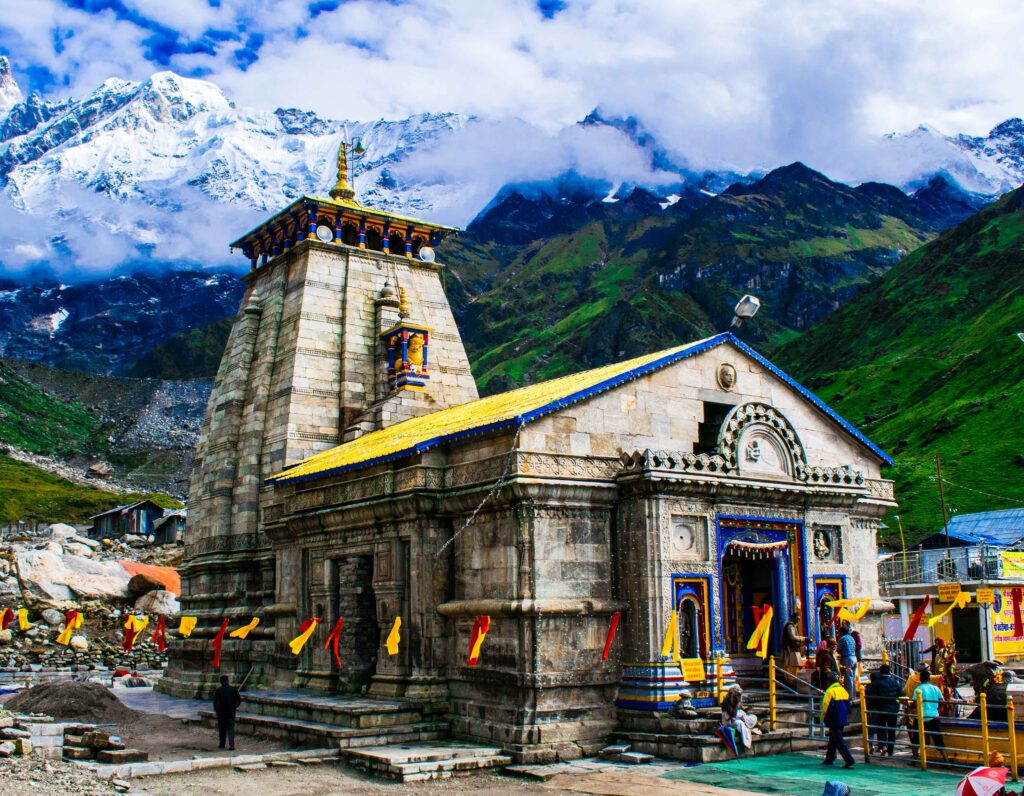The History of Kedarnath Temple: A Sacred Journey Unveiled

The Kedarnath Temple, nestled amidst the majestic Himalayan peaks in the Rudraprayag district of Uttarakhand, India, is a revered Hindu pilgrimage site. This ancient temple holds immense religious and historical significance, drawing devotees from all corners of the world. With its awe-inspiring location and profound spiritual ambiance, Kedarnath Temple stands as a testament to the deep-rooted faith and rich cultural heritage of India. Let us embark on a captivating journey through the history of Kedarnath Temple, unraveling its origins, legends, and architectural marvels.
History of Kedarnath Temple: A Glimpse into the Past
The history of Kedarnath Temple dates back to ancient times, steeped in mythical legends and folklore. Here, we delve into the captivating narrative that surrounds this sacred abode:
The Mythological Origins: According to Hindu mythology, Kedarnath Temple is believed to be established by the revered Pandava brothers from the epic Mahabharata. After the great Kurukshetra War, the Pandavas sought redemption for their sins, seeking the blessings of Lord Shiva. It is said that Lord Shiva, eluding them, transformed himself into a bull and dived into the ground, with his hump resurfacing at Kedarnath. Thus, the temple was built at the hallowed spot where Lord Shiva reappeared.
Adi Shankaracharya’s Influence: In the 8th century, the great philosopher and theologian Adi Shankaracharya played a pivotal role in reviving the temple. He traveled extensively across India, propagating the Advaita Vedanta philosophy, and reestablished the significance of Kedarnath Temple as one of the twelve Jyotirlingas (radiant lingas) of Lord Shiva.
Temple Renovations: Over the centuries, Kedarnath Temple underwent several renovations and expansions. The original structure, constructed by the Pandavas, was reconstructed and beautified by various kings and devotees. The present-day temple, rebuilt in the 8th century, showcases exquisite stone carvings and intricate architecture.
Natural Calamities and Restoration: Kedarnath Temple has faced the wrath of nature multiple times throughout history. The most devastating incident occurred in 2013 when heavy rainfall and flash floods wreaked havoc in the region. The temple complex was severely damaged, but relentless efforts were undertaken to restore this sacred site, preserving its ancient glory.
Spiritual Significance: Kedarnath Temple holds immense spiritual significance for Hindus. It is believed that a pilgrimage to this holy shrine washes away one’s sins and grants liberation from the cycle of birth and death. The temple attracts devotees, ascetics, and spiritual seekers, fostering an environment of intense devotion and self-realization.
In conclusion, the history of Kedarnath Temple is a tapestry woven with ancient legends, spiritual devotion, and architectural marvels. This sacred abode in the lap of the Himalayas continues to inspire and captivate pilgrims from across the globe. With its rich heritage, breathtaking surroundings, and profound spiritual significance, Kedarnath Temple stands as a testament to the enduring faith and cultural legacy of India.
As you plan your pilgrimage to Kedarnath Temple, remember to immerse yourself in the tranquility of the surroundings, partake in the rituals with reverence, and embrace the spiritual aura that envelops this eternal haven.
FAQs about Kedarnath Temple
1. When is the best time to visit Kedarnath Temple?
The best time to visit Kedarnath Temple is during the summer months, from May to June, when the region experiences mild weather, making it easier for devotees to trek to the temple.
2. How can one reach Kedarnath Temple?
To reach Kedarnath Temple, one must undertake a trek of approximately 16 kilometers from Gaurikund, the base camp. The trek offers breathtaking views of the surrounding mountains and passes through picturesque landscapes. Ponies, palanquins, and helicopters are also available as alternative modes of transportation for those who prefer not to trek.
3. Are there any accommodations available near Kedarnath Temple?
Yes, there are several accommodations available near Kedarnath Temple to cater to the needs of pilgrims. These range from basic guesthouses and lodges to more luxurious options. It is advisable to book accommodations in advance, especially during the peak pilgrimage season, to ensure a comfortable stay.
4. What are the rituals and customs followed at Kedarnath Mandir?
The rituals and customs at Kedarnath are deeply rooted in ancient traditions. Devotees perform a holy dip in the Mandakini River before commencing their pilgrimage. Upon reaching the temple, they offer prayers and perform aarti (ritualistic worship) to seek blessings from Lord Shiva. It is customary to seek forgiveness for one’s sins and make offerings of flowers, fruits, and sweets.
5. Can non-Hindus visit Kedarnath Dham?
Yes, non-Hindus are allowed to visit Kedarnath Dham and experience its spiritual aura. The temple complex promotes inclusivity and welcomes people from all walks of life. However, it is essential to respect the religious sentiments and traditions observed within the temple premises.
6. What are the nearby attractions one can explore during a visit to Kedarnath Temple?
Besides the Kedarnath Temple itself, there are several other attractions worth exploring in the vicinity. One can visit the Shankaracharya Samadhi, dedicated to Adi Shankaracharya, located near the temple. The Vasuki Tal, a pristine lake surrounded by snow-capped mountains, is another scenic spot nearby. Additionally, one can embark on treks to breathtaking locations like Chorabari Tal (Gandhi Sarovar) and Triyuginarayan Temple.


